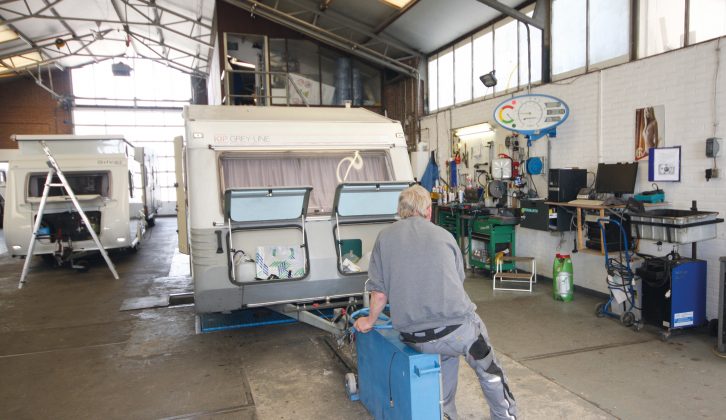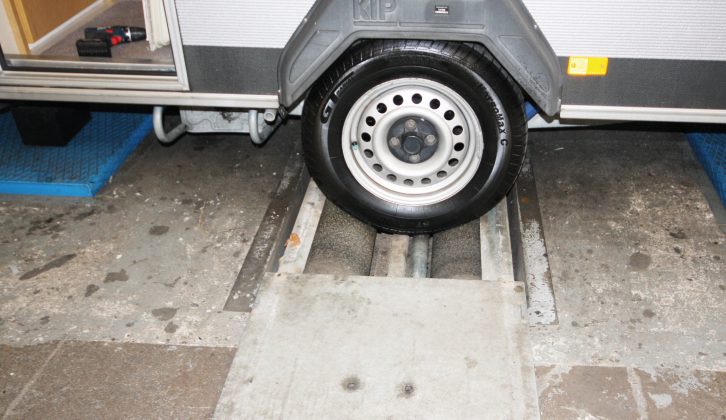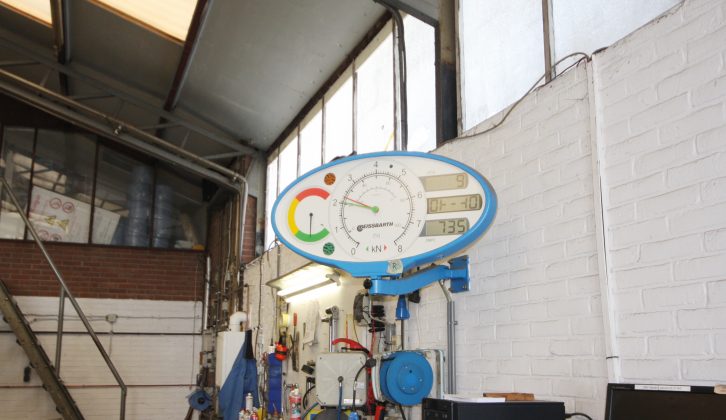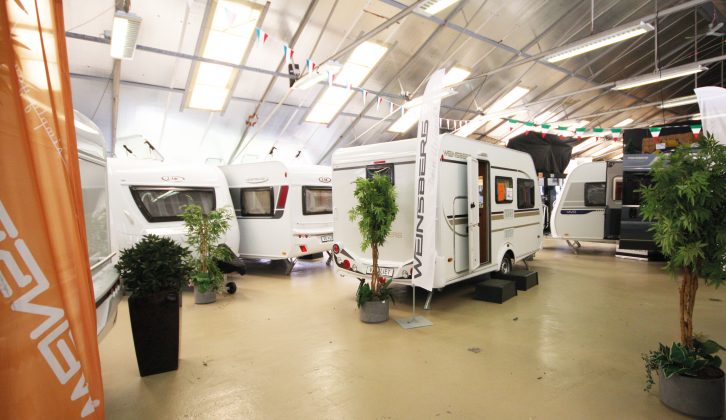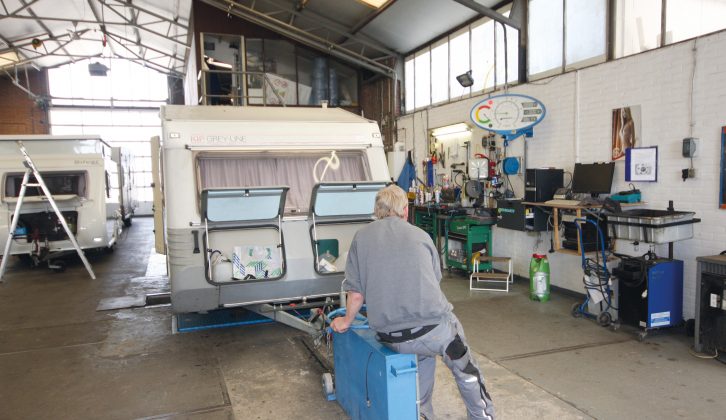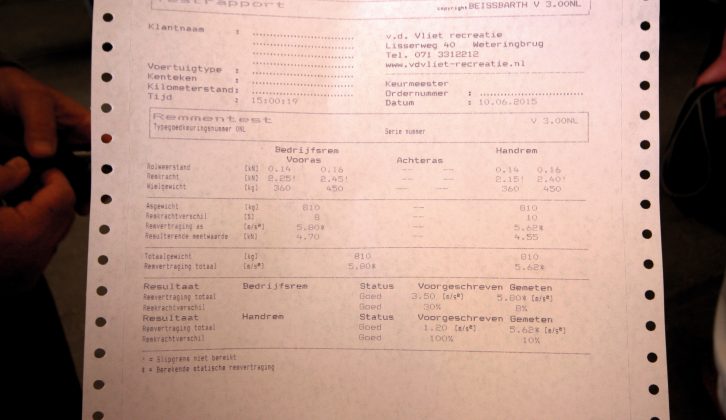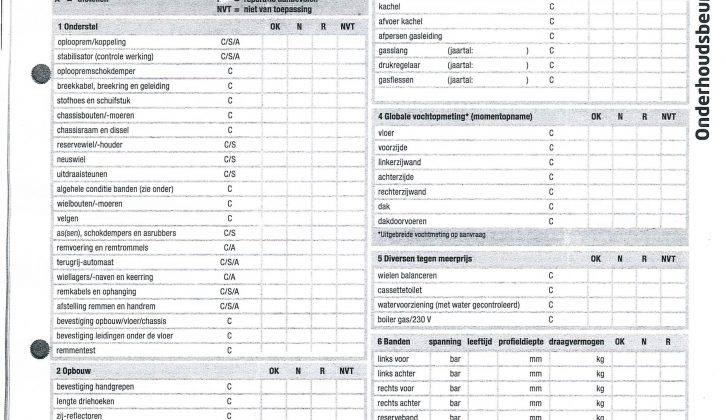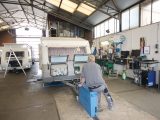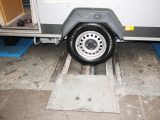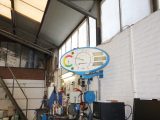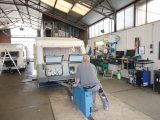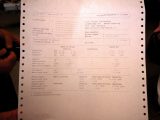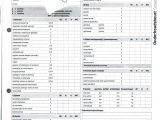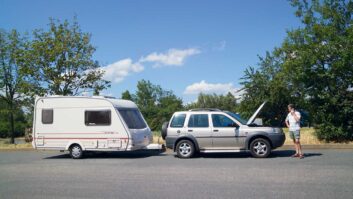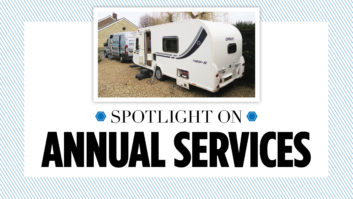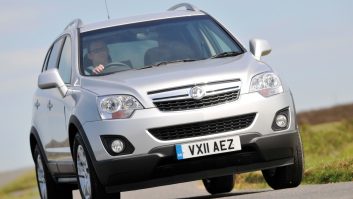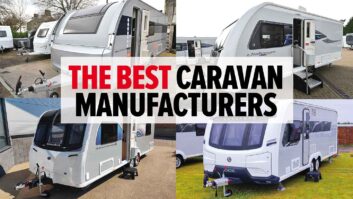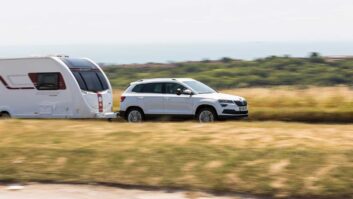On a recent trip to The Netherlands I visited Van der Vliet Recreatie, a well-known caravan dealership at Weteringbrug, to the south-west of Amsterdam, and witnessed a caravan being serviced.
A very popular caravan in The Netherlands is the Kip Greyline, an example of which was on a hydraulic lift inside Van der Vliet’s large workshop, being attended to by a mechanic. He explained to me that the Dutch service is almost a cross between UK servicing and MoT testing.
Each to their own
There are a number of differences between tourers in The Netherlands and those in the UK. For starters, there are the obvious things such as usually being much more sparsely equipped, with only bare essential cooking facilities (no ovens), and often no hot water systems, and so on. Dutch caravanning tends to be seasonal and the caravan is mainly used for sleeping in, while the living is done outside.
However, it’s not only how tourers are equipped that’s different. First of all, caravans are registered vehicles in their own right, bearing an individual number plate that’s totally separate from the towing vehicle’s, although they’re not taxed. Second, they must be insured to be used on the road.
With regards to the caravan servicing, while it’s not mandatory, the Dutch are responsible when it comes to the safety of their vehicles. Just like in the UK, it’s obligatory for owners to ensure that vehicles are in a roadworthy condition prior to taking to the highways and byways. You can do some servicing yourself, of course. I’ve written previously about how to check your caravan tyres, and how to check the hitch head, jockey wheel and corner steadies, how to adjust caravan brakes, and so on. Unlike in the UK though, in Holland this caravan servicing is only required bi-annually, and includes all the usual things such as testing fitted equipment; gas and electrical systems, and the running gear, including lights and so on.
The brakes are also tested for efficiency, in a similar manner to cars in the UK by using a rolling road. With the wheels on the rolling road, the hitch is connected to a device that is secured on a track fastened to the floor. To test the brakes, a wheel on top of the device is turned that compresses the hitch head, thereby operating the brakes. Just as with the UK’s MoT test, the brakes’ efficiency can be seen on dials telling the operator that they’re working properly (or not!), and the owner is given a printout of all the recorded data. It does seem to be a good system, and I’m sure it gives peace of mind to owners.
Insurance firms like it
Although the service is not mandatory, if the caravan is serviced, then gas hoses from the gas cylinders to the van’s system are replaced as a matter of course every four years, and tyres must be changed every six. The implications of not having the required servicing and documentation are that in the event of any accident, insurance firms are not likely to pay out, irrespective of who was at fault.
While I wouldn’t advocate separate MoT tests for caravans being introduced in the UK, because I know that the majority of caravanners do take great care in maintaining and have pride in their vehicles, having brakes tested on a rolling road, and insurance requiring that gas hoses and tyres are changed, are not necessarily bad ideas. Perhaps UK insurance companies could offer better discounts for caravans that do meet those requirements?
While there aren’t perhaps as many things to service on a Dutch caravan as there are on its UK counterpart, the cost of the bi-annual service/test at Van der Vliet’s was a reasonable €235 (£164 at the time of writing) for a single caravan, which included the brake testing.
Without the servicing, insurance firms are not likely to pay out
